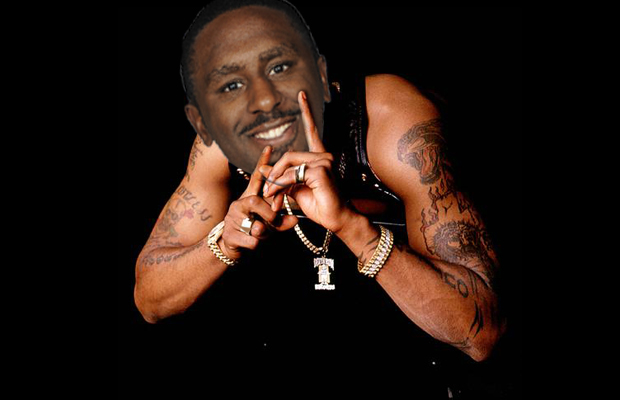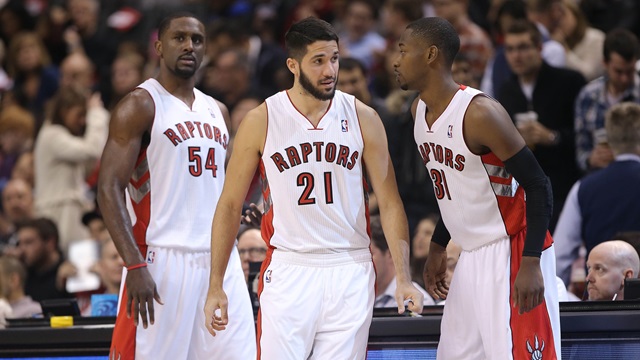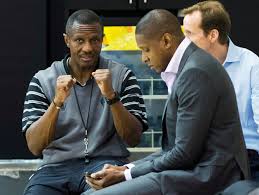Woah – before you continue, the deadline for the RR tourney is today – sign up now!
I’ve been very impressed with Patrick Patterson’s 14-game tenure with the Toronto Raptors. Although he’s merely replicating his career averages — 8.7 points per game, 4.2 rebounds per game on near 50% shooting — Patterson has become integral to the Raptors’ success. Despite being only 24 years of age, Patterson plays with a discernible veteran savvy. Since riding into town in the Rudy Gay trade, Patterson has managed to make us forget all about Quincy Acy (except me, love you Acy!) and supplant Hansbrough as the first big off the bench. For a franchise that sported Andrea Bargnani — a purported stretch big — at the helm for the worse part of 6 seasons, watching Patterson sink jumper after jumper has been a long-awaited revelation.
But here’s the rub — Patterson is a restricted free agent this off-season, and Masai Ujiri will face a difficult task in setting a price on the former Kentucky Wildcat. Ujiri has the right to match any offer that lands on Patterson’s desk, but how much should he pay to retain his sweet-stroking services? In order to answer that question we’ll first need to take a peek at Patterson’s scouting report.
Breaking it Down: 2Pat Stays “Loyal to His Game“
OFFENSE
It’s no big secret that the Raptors run exactly one play for Patrick Patterson — the pick-and-pop. Patterson initiates the action by setting a screen for either Derozan, Lowry, Vasquez or Salmons. Once both defenders commit to trapping the ball-handler — which happens almost every time thanks to the proliferation of Thibodeau’s defensive principles — Patterson slips the screen, moves to an open-spot on the floor, catches the pass and shoots it. The play looks something like the following:
Patterson has two things going for him on the pick-and-pop. First, he’s a fantastic shooter from the midrange. His shooting percentage from 16-23 feet in his first three seasons were 47%, 43% and 49% respectively, which places him among the elite for his position (as a reference, Chris Bosh ~career 45%, Lamarcus Aldridge ~41%). Second, Patterson is a heady player who knows how to get open. He slips the screen at the right time and moves to open spots on the floor. The integration of Patterson’s pick-and-pop abilities has given the Raptors offense an added dimension that affords Valanciunas and Johnson some space to operate in the interior.
Patterson is also a decent spot up shooter who can hit the occasional three. Although he’s merely average from distance (career 36.1 3pt%), Patterson’s spot-up abilities allow for him to serve as an effective pressure valve at the end of plays. When the shot clock dwindles down to it’s dying seconds, the Raptors can always swing the ball over to Patterson for a reasonably effective shot.
The bad news is that Patterson doesn’t really do much else on offense. According to Synergy Sports, 59.2% of Patterson’s plays as a Raptor have come via the pick-and-pop or from spotting-up (the remaining 40% are a hodge-podge of random play types). He doesn’t have a discernible post-game and he is a below-average finisher near the basket because he lacks both athleticism and craftiness. As a result, Patterson is also inept at drawing fouls (0.9 free throw attempts per game is embarrassing), although he makes up for it by being an average offensive rebounder and a heady passer.
Beyond that, Patterson’s offensive skillset is a little less tangible. Based on my personal observations, Patterson looks like a smart player who knows when and where to make cuts. Since he’s moved around a lot over the first four years of his career, the synergy data from recent seasons are a bit wonky, but in his last full season in Houston, 15% of Patterson’s plays were categorized as “cuts”, which suggests that at a minimum, Patterson is a capable cutter. Altogether, Patterson is a useful offensive player as evidenced by his career offensive rating of 109.
DEFENSE
Like most other power-forwards, the bulk of Patterson’s defensive assignments are distributed between post-ups, defending the pick-and-roll, and help-defense near the rim. As I mentioned earlier, Patterson is relatively nonathletic and mostly stays ground-bound, which serves him well in the post. 2Pat weighs a solid 235 pounds and his size allows him to body up against bulkier bigs. He usually demonstrates sound defensive practices — he keeps both hands straight up, isn’t prone to over-aggressively reacting to pump-fakes and he doesn’t jump at his opponents — which allows him to be an effective deterrent in 1-on-1 situations. Here’s one example of him standing tall against Taj Gibson:
However 2Pat struggles when he’s tasked with moving laterally. He recognizes and understands where he should be, which is half the battle, but he has neither the lateral quickness to effectively recover, nor the quick jumping ability necessary to be an effective weak-side shot-blocker. Basically he tries hard and he knows what he’s doing, but sometimes he’s too slow to pull it off. In the following clip, Chris Bosh catches the ball on the move and easily gets by Patterson:
Altogether, Patterson’s defense grades out to somewhere between a slight-minus and average. He should ideally play alongside a rangy, mobile big like Amir Johnson, but he also won’t single-highhandedly betray the defense either. Just don’t expect rim-protection or effective help-defense from Patterson.
As a whole, Patterson is a serviceable, offensively-oriented third big. His overall production can be broadly quantified by cumulative boxscore statistics like PER or Win Shares, and both metrics have him pegged as a slightly above average player (15.3 PER, 0.133 WS/48). He shouldn’t be mistaken as a starting caliber power-forward on a contending team, but the combination of his size, court awareness and ability to shoot is rare and valuable, which begs the question — how much should Masai pay to retain the guy?
Evaluating the Market for Patterson: “Until the End of Time” or “Changes“?
Patterson’s rookie-scale contract expires after this season and he will enter free agency as a restricted free-agent. Since he has not proclaimed any particular allegiance or affiliation to the franchise, I’ll assume he won’t give Toronto any hometown discounts and that he and his agent will act like any other young free-agent — he wants money and term more than anything else.
A quick estimation of the Raptors payroll in 2014-2015 has the Raptors at ~$40 million dollars committed to seven players, as detailed below. This scenario involves waiving the partially guaranteed contracts of Hansbrough, Daye, Buycks, Stone and Salmons (their cap hit is included in the chart below). This also assumes that Toronto revokes the rights to Greivis Vasquez. This leaves approximately 16 million dollars in cap room for any incoming free-agents, to facilitate trade, or to resign Lowry and Patterson (click picture to enlarge, I realize it’s tiny).
 Given their wealth of cap space and the fact that Toronto owns Patterson’s bird rights, the Raptors have very few financial impediments to resigning Patterson, but the question remains — how much do you pay him?
Given their wealth of cap space and the fact that Toronto owns Patterson’s bird rights, the Raptors have very few financial impediments to resigning Patterson, but the question remains — how much do you pay him?
Doling out contracts to mid-tier guys like Patterson is always tricky. If you lock in a useful player at below-market value, you preserve flexibility and establish an asset that can be easily liquidated for picks and/or cap space. Conversely, if you overpay, you’ll taint the value of a productive player and limit your financial wiggle-room. You need look no further than former GM Bryan Colangelo’s tenure to understand the dangers of falling prey to the latter.
I’ve combed through the signings in the last two seasons for “forwards” and “forward-centers” to establish a ball-park figure. Given Patterson’s age (24) and track record, the floor for Patterson’s contract will likely be a two-year contract similar to what Philly gave Lavoy Allen ($6 million over two years), and the ceiling should be no higher than what JJ Hickson received ($16 million over three years). Given this ball-park, I looked at players at his position (PF/C) with similar age (24) and skill-sets (ability to shoot, not horrible on defense). The three comparisons I found were Brandon Bass (26 when he signed), Darrell Arthur (24) and Marreese Speights (25). Their 4th season per-36 numbers are show below (Patterson’s numbers are from his time here in Toronto):
Bass is clearly the cream of this crop. He represents the best combination of scoring and rebounding amongst the four which is probably why he received the biggest contract ($19 million over three years). Patterson has more range than Bass and is a better spot-up shooter but Bass has a post-game and much better rebounder. Patterson’s next contract total will likely be eclipsed by Bass’ salary.
Darrell Arthur is an oddball. He’s the most dogged defender out of the four by virtue of being rangier, more mobile and more athletic, but he’s also the most limited offensive player out of the four. Arthur signed for $9 million over three years with the Denver Nuggets this past offseason, which was probably a bit of an overpay given that Denver hell-bent on dumpster-diving this offseason (signing NateRob, Hickson, Arthur, Foye).
Finally, there’s Speights, the excellent rebounder who can pass for “versatile” on offense. His jumpshot isn’t as pure as Patterson’s, but he is the better rebounder, especially on the offensive end. Speights signed with Golden State for $11 million over three years, the third of which is a team option.
Given his production, age and skillset, Patterson clearly belongs in this collection of “third-bigs”. I’m too lazy to look around the league for obvious starting power-forward openings, but I’ll assume that Patterson isn’t widely considered anything more than a first big off the bench. While it’s possible that Patterson might want to leave the Raptors for a legitimate championship contender, most teams that would fall into that category (Spurs, Heat, Clippers, Thunder, Portland, Golden State, Houston, Indiana) don’t have a gaping hole at the four to justify spending their mid-level exceptions on Patterson, and 2Pat isn’t exactly in a position to turn down guaranteed years nor money.
My prediction is that Ujiri waits for the market to set the price on Patterson. If someone goes crazy and offers Patterson 18 million over three years, Masai shakes his hand and bids 2Pat adieu. Otherwise, Masai probably matches any offers below $13 million over three seasons for Patterson’s services. Ujiri’s track record as GM suggests that he’s very conscious about managing assets and he is a deft trader who can get out from underneath bad contracts if need be. If I had to give some sort of prognostication, I would expect Patterson to re-sign for $12 million over three years with a $1 million dollar buyout option in the final season. That’s a fair price to pay for a decent third-big with smarts and range on his jump-shot, and I look forward to 2Pat hitting ’em (jumpers) up as a Toronto Raptor for the next few seasons (I couldn’t resist sneaking one more 2Pac reference in there. I’m sure you California Love-d it).
Statistical Support from Hoopdata (RIP), NBA Stats and Basketball-Reference




